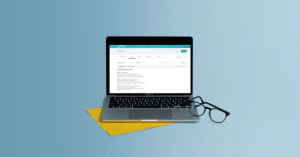Listen on Apple Podcasts Listen on Spotify
This Week’s Episode: Data Collection Documentation Tips
This month we have been discussing all things data. 🤓
We started out this series with the importance of probe data, when to take it, and why we take it. Last week I shared tips on how to stay organized while collecting data and then we touched on strategies for collecting probe data in mixed groups!
So without further ado, let’s get started with this week’s topic. Today, we are chatting about how to document the therapy data when you are using this probe at the beginning of the session. And then just focusing on providing students with awesome support throughout the rest of the session.
Shall we dive in?
Strategies + Tips Discussed:
My goal is to provide the amount of support that the students need to achieve 80% accuracy. Knowing their probe data really helps!
1. Take probe data at the beginning of the session
2. Enter accuracy of probe data for each student (if in mixed groups have the students review their goals)
3. Save probe data and put it away and focus on the rest of the session with the student
Types of strategies and supports
Teach the skill (using a visual)
Focused stimulation (for grammar) – research shows that students benefit from focused stimulation prior to producing the target themselves
Contrastive imitation (for grammar)
Model
Visuals
>articulation (placement visual)
>icons for grammar structure
Verbal Cues
>articulation (tongue tip up!)
Gestural Cues
> articulation (hand cue)
> counting fingers when describing action pictures
Additional Links
SLP Now Academy for evidence-backed strategies (included in the SLP Now Membership)
Join our Free Digital Data Bootcamp
Do you want to learn how to set up and customize the digital data collection system that’s helped SLPs save an average of 180 hours per school year for your caseload…no matter its size or diversity. You can… in as little as 5 days! Join the Digital Data Bootcamp today!
Subscribe & Review in iTunes
Are you subscribed to the podcast? If you’re not, subscribe today to get the latest episodes sent directly to you! Click here to make your listening experience auto-magic and as easy as possible.
Bonus points if you leave us a review over on iTunes → Those reviews help other SLPs find the podcast, and I love reading your feedback! Just click here to review, select “Ratings and Reviews,” “Write a Review,” and let me know what your favorite part of the podcast is.
Thanks so much!
Transcript
Marisha : Hello there and welcome to the SLP Now Podcast, where we share practical therapy tips and ideas for busy speech language pathologists. Grab your favorite beverage and sit back as we dive into this week's episode. Hey, there. It's Marisha and welcome to the SLP Now Podcast. This month, we are diving into all things data collection. We'll start off by talking about collecting probe data and why we would even want to do that.
Marisha : And then we'll talk about organizing the probes, strategies to collect data in groups, and then how to document therapy data. So without further ado, let's get started with this week's topic. Today, we are chatting about how to document the therapy data when you are using this probe at the beginning of the session strategy and just focusing on providing students with awesome support throughout the rest of the session.
Marisha : The cool thing is when you're using the strategy, you get really nice clean data right off the bat, right within the first minute or two of the session. With my system, I just quickly enter because the probes that I use are attached to my session. I'll just open up the session, pull up the probes, run through them for each student. And then I enter their accuracy as each student completes their probe. And then I hit save and I just put that away.
Marisha : And then I focus on giving students exactly what they need to achieve roughly 80% accuracy with that skill. For some students, like we talked about in the first episode of the series, if they score 0% accuracy on the probe, I'm going to provide a lot of support and I'll give the students a visual. I'll break it down. I will do some structured practice and really, like I said, break down that skill for the student. However, if they score really high accuracy, then I'm going to back off and let them demonstrate their skill in context.
Marisha : I mean, their accuracy will likely shift when we jump into context. We'll just want to be prepared to provide supports as needed. But as long as the student is able to achieve about 80% accuracy, I'm not going to add in any support. I'm just going to give them the opportunity to show their skills. And if they need that support, I will be ready to jump in very quickly. That's how I approach that and what that looks like.
Marisha : However, I get a lot of questions about how to document and describe that when we're documenting the therapy session. It's nice to have that one number at the very beginning of the session, but what do I do at the end of the session? And what else do I enter about the other 28 minutes that I was with this student or however long the session is? I really focus on documenting the types of strategies that I use to support the student. Typically, I log into SLP Now, which what I use to collect data.
Marisha : And then I go to the session. Like I said, I enter that data, the probe data. I'll pull up the probe, enter the probe data, and then we're good to go with that. I put that away until the end of the session. This is what I do as we're wrapping up the session in the group. We do like a quick recap of how the session went for the student. I document accuracy without support through the probe. Then I document accuracy with support. We're aiming for 80. More often than not, I just enter 80 for accuracy with support.
Marisha : And then in a SLP Now, there's a dropdown to enter your level of support. This is totally customizable too, which I love. You can enter your favorite types of support. Literally all you have to do at the end of the session is think about what strategies you use to support the student. We'll do like a quick recap of some of the types of things we might enter there. But the cool thing is when you're using the system, let's say the student had 20% accuracy on the probe. I would enter that.
Marisha : They got 80% accuracy and context. When I gave them whatever list of strategies, I would just click those in the session. Then in SLP Now, I can load the template. It's perfect note that I can copy and paste into billing, or just if I don't have to bill, it's a great documentation of the session as a whole. But it tells me the student I saw, what activity we did, when I saw them, what goal was targeted or which goals were targeted, how they did on the probe, and then how they did in context. And that's all just listed out for me.
Marisha : And then it also tells what supports benefited them. If I suddenly develop amnesia and I don't remember what we did in the previous session, I can just load the previous note and see exactly how she did and what strategies were helpful for that goal. We'll just take a couple minutes to talk about some strategies. I might document that I taught the skill using a visual, or that I taught the skill using a structured drill, or that I provided focused stimulation. This is a really cool strategy for grammar.
Marisha : Research show that students benefit from focused stimulation prior to producing the target themselves. If I gave them a past tense verbs probe and they achieved 0% accuracy, grammar is like a little harder to teach, especially for the younger ones, so I find that focused stimulation is really helpful. Maybe as we're reading the book, if the story is written in the present tense, I might just shift it to the past tense and really focus on emphasizing those past tense verbs so that the student has a lot of exposure.
Marisha : And maybe just by doing that, it'll prime them to be able to start producing it when we get to more of a structured drill. And maybe not. Sometimes it takes a longer period of focused stimulation before they're ready to produce that, but we can document using focused stimulation as a strategy. We can also use contrast of imitation for grammar. And then like some of the more traditional things that you might see is like providing a model.
Marisha : I might model how to use the sentence, or I might model the definition for whatever vocabulary target we're working on. And then when given a model, the student can complete whatever task it is. Or if we're working on producing L in sentences, if I give them a model as they're producing it or before they produce it, then that is helpful in increasing their accuracy. You can also use visuals like an articulation placement visual, or like if you're working on story grammar, you might give them icons.
Marisha : I have a sentence pack that I really like to use for grammar goals and it has icons for different parts of speech. We can create little sentence trips to help students build sentences. We can give them verbal cues. The cool thing about this is that you can document which cues were most helpful. For example, if you're working on L and they benefit from the cue tongue tip up or a jaw cue of like you curling up your hand a little bit, you can document that and then you'll be like, "Oh yeah, that strategy was super helpful."
Marisha : You won't have to reinvent the wheel every time. You can just reuse that strategy and it'll be good to go. This was just a quick review of some strategies that a lot of us use and some that I've found in the research. If you want more evidence-backed strategies like this, I would highly recommend checking out the academy. I have broken down... I dug through the research for grammar vocabulary and all of the different areas.
Marisha : We share a bunch of different strategies, evidence-backed strategies, that you can use, and it'll give you tons of ideas for supports. We also have cheat sheets for all of the different skills in the SLP Now materials library. If you don't have time to sit down and listen to a course, the cheat sheets can give you some quick strategies that you can implement.
Marisha : If you're working with a student on past tense verbs and they're having trouble making progress, you can look at that and see if there's any strategies you haven't used yet and give those a try. And then you can add them to your level of support dropdown in the session so you can easily reference them and be reminded of them too. And then if you're an SLP Now member, you have access to all of this.
Marisha : But if you're not, we have a free trial, so you can access all of the courses and download some of the cheat sheets just to see if it would be helpful. And even if just downloading a couple of cheat sheets streamlines your therapy, data, and documentation, that would make me very, very happy. Absolutely no obligation. But if you want to check that out, just head to slpnow.com/trial to give it a try. That's all that we've got for our data collection month, but I did want to share just one quick note too.
Marisha : Throughout this series, I've talked about taking data on one goal per session and rotating through the goals. I hope I did a good job mentioning this throughout, but use your clinical judgment. If it makes more sense just to focus on one goal for a month and you just want to go all in on that goal, there is a rationale for having like more of that, like mass practice versus distributed practice over the course of sessions. Sometimes, especially as student make more progress, we might want to target more than one goal.
Marisha : And just because you only collect probe data on one goal doesn't mean that you're not going to target the other goals in the session either. When I'm using SLP Now to look at data, I can easily open up the goals and see the past probe data accuracy. I don't need to collect a probe every session to be able to target that goal. It still gives me an idea of where the student is at even if I didn't collect data in that particular session.
Marisha : Those are just like a couple quick strategies that I wanted to make sure that we addressed. But yeah, that is a wrap on the series officially.
Marisha : If you are wanting to check out any of the links or resources mentioned in today's episode, head to slpnow.com/113. Again, that's slpnow.com/113. We'll see you next month. Thanks for listening to the SLP Now podcast. If you enjoyed this episode, please share with your SLP friends and don't forget to subscribe to the podcast to get the latest episode sent directly to you. See you next time.
Sign up to receive email updates
Enter your name and email address below and I'll send you periodic updates about the podcast.




Reader Interactions